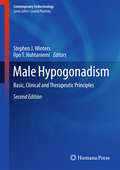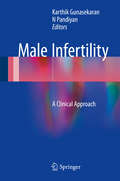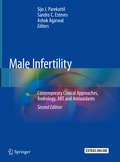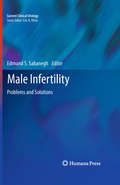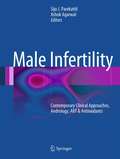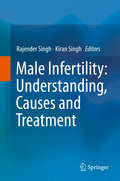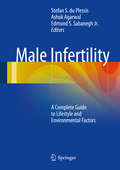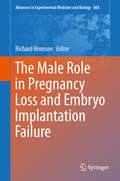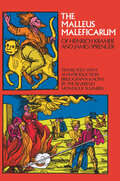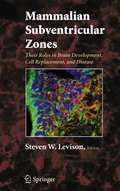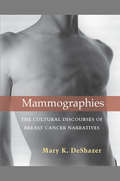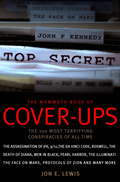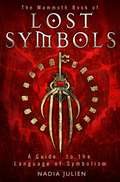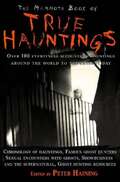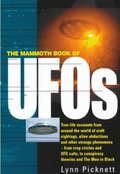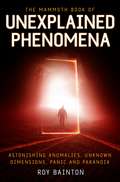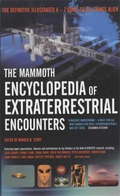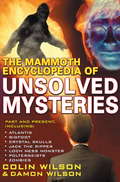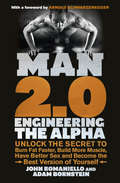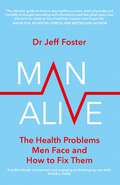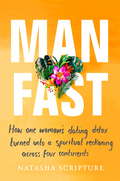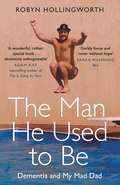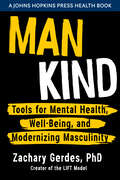- Table View
- List View
Male Hypogonadism: Basic, Clinical and Therapeutic Principles (Contemporary Endocrinology)
by Stephen J. Winters Ilpo T. HuhtaniemiNow in a revised second edition, this comprehensive text covers all aspects of male hypogonadism from the basic science to clinical management, comprehensively explaining and applying new insights to the treatment of hypogonadal men. Chapters covering neuroendocrine control of testicular function, Leydig cell function, spermatogenesis, and normal and delayed puberty open the book. The focus then turns to the pathophysiology and treatment of hypogonadism and other forms of testicular dysfunction, such as Klinefelter syndrome, cryptorchidism, and disorders of the pituitary, as well as reproductive and endocrine consequences of cancer treatment, environmental factors, obesity and aging. Next are chapters that describe the available options for androgen replacement therapy, and the outcomes when men with hypogonadism of various causes are treated with testosterone, as well as a chapter devoted to current approaches to stimulating spermatogenesis in gonadotropin-deficient men. Highly practical and updated with the latest available data, this second edition of Male Hypogonadism: Basic, Clinical and Therapeutic Principles cogently presents a large body of scientific information on male reproductive endocrinology to provide a thorough understanding of the pathophysiology, clinical characteristics, and treatments for disorders that adversely affect testicular function.
Male Infertility: A Clinical Approach
by Karthik Gunasekaran N PandiyanThe book aims to bring into focus the current understanding of male reproduction and the pathological basis of failure to reproduce in men. Infertility in men is a common disorder. However, attempts at scientific study of male infertility are of very recent origin. Many questions about the physiology and pathophysiology of male reproduction are still not clear. The chapters are written by authorities in the field with great clinical experience. The primary focus would be on clinical perspective; however emphasis would also be placed on basic research and molecular biology.
Male Infertility: Contemporary Clinical Approaches, Andrology, ART and Antioxidants (Springerbriefs In Reproductive Biology Ser.)
by Sijo J. Parekattil Sandro C. Esteves Ashok AgarwalA groundbreaking contribution to the literature now in its revised and expanded second edition, this textbook offers a comprehensive review of diagnostic and treatment techniques for male infertility. This state-of-the-art, evidence-based textbook incorporates new multidisciplinary and complementary medicine approaches to create a first-of-its-kind guide to treatment strategies for male infertility and beyond. While this new edition is primarily designed as a reference for students and residents in reproductive medicine and andrology, it will be equally useful as well for professionals in urology, reproductive endocrinology, embryology, and research fields who are interested in the role that antioxidants play in male infertility.World-renowned experts in these areas have been selected to participate in this work. Careful selection of the highest quality content will span the whole range of topics in the area of male infertility, providing a complete review of well-established and current diagnostic and treatment techniques for male infertility. The incorporation of 20 new chapters will enhance the book’s appeal by including the most recent advances brought to the male infertility arena. Additionally, this edition incorporates new features, including bulleted key points, review criteria and select video clips demonstrating some of the most fascinating male infertility treatment modalities. A dedicated new section on current guidelines on male infertility will enlighten readers on how to most optimally manage male infertility clinical scenarios. Covering all aspects of diagnosis and management, ART, lifestyle factors and associated conditions for male infertility, Male Infertility: Contemporary Clinical Approaches, Andrology, ART and Antioxidants will be a readily accessible, high quality reference for medical students and residents, and will be of significant value to professionals working in the various fields treating this condition as well.
Male Infertility: Problems and Solutions (Current Clinical Urology)
by Edmund S. SabaneghMale Infertility: Problems and Solutions provides a summary of state of the art developments in male infertility for both new and experienced practitioners. Written in a clear, concise and readable style, this volume allows the reader to obtain rapid answers to this challenging medical issue. Special emphasis is placed on diagnostic and treatment algorithms. Topics covered include interpretation of semen analysis and advanced testing, endocrine and genetic evaluation, diagnosis of azoospermia as well as an up-to-date interpretation and analysis of the many new therapies available for the treatment of male factor infertility. Male Infertility: Problems and Solutions provides rapid acquisition of pertinent background and development of management plans through the use of concise discussion and treatment algorithms and thus will be of great value to general urologists, gynecologists, primary care providers and allied health providers who manage infertility in both men as well as women.
Male Infertility: Contemporary Clinical Approaches, Andrology, ART & Antioxidants
by Sijo J. Parekattil and Ashok AgarwalA ground-breaking contribution to the literature, Male Infertility: Contemporary Clinical Approaches, Andrology, ART & Antioxidants offers a comprehensive review of well-established, current diagnostic and treatment techniques for male infertility. This state-of-the-art, evidence-based resource incorporates new multidisciplinary and complementary medicine approaches to create a first-of-its-kind guide to treatment strategies involving antioxidants for male infertility. Designed as an easily accessible practical reference for daily use, Male Infertility: Contemporary Clinical Approaches, Andrology, ART & Antioxidants provides a high quality guide for urologists, reproductive endocrinologists, embryologists, andrologists, biologists and research scientists interested in the role that antioxidants play in male infertility.
Male Infertility: Understanding, Causes and Treatment
by Rajender Singh Kiran SinghThis book covers the latest research on male infertility. The topics discussed range from understanding the genetic basis of infertility, to its causes and treatment. Since infertility is also of great interest to the general public, the book also includes a detailed description of what infertility is and how one can understand the different types. Given the complex etiology of infertility, the book includes a number of chapters defining the known and probable causes of male infertility. Providing detailed information suitable for patients and clinicians alike, it also features a separate section on treatment, the ultimate goal.
Male Infertility: A Complete Guide to Lifestyle and Environmental Factors (Current Clinical Urology Ser.)
by Stefan S. du Plessis Ashok Agarwal Edmund S. Sabanegh Jr.This unique text provides a comprehensive yet concise review of the various environmental factors and lifestyle choices which impact male fertility, with special emphasis on the mechanisms that contribute to decreased sperm production and impaired function. Internationally recognized scientists and clinicians, leaders in the field of infertility, gather their insights and discuss how to prevent, address and cure male infertility caused by factors such as smoking, alcohol consumption, medication and drug use, obesity, dietary and exercise habits, sexually transmitted infections, psychological stress and occupational exposure to chemicals and radiation. Written in an easy to follow, informal yet scientific style, Male Infertility offers invaluable clinical guidelines for physicians and infertility experts and new data and research of great interest to basic scientists, andrologists and embryologists.
The Male Role in Pregnancy Loss and Embryo Implantation Failure (Advances in Experimental Medicine and Biology #868)
by Richard BronsonNovel topics compiled in this one-of-a-kind volume provide tantalizing hints for clinical application through future translational research. Only recently have we come to ask what role the male might play in pregnancy loss and embryo implantation failure, beyond contributing an abnormal set of paternal chromosomes at fertilization. This volume explores the recent evidence that these conditions might also be related to the transmission of previously unrecognized chromosomal micro-deletions and duplications, or via the epigenetic dysregulation of early embryonic gene function by spermatozoal microRNAs or alterations in sperm DNA methylation patterning, or by DNA damage secondary to either reactive oxygen species or environmental toxicants. In addition, the composition of seminal plasma has been found to be highly complex, containing many factors that play important roles in altering the uterine environment and the female immune system permissive of embryo implantation and trophectoderm outgrowth leading to successful pregnancy. Coverage includes an examination of both spermatozoa and seminal fluid component factors.
The Malleus Maleficarum of Heinrich Kramer and James Sprenger (Dover Occult)
by Montague SummersFor nearly three centuries Malleus Maleficarum (The Witches' Hammer) was the professional manual for witch hunters. This work by two of the most famous Inquisitors of the age is still a document of the forces of that era's beliefs. Under a Bull of Pope Innocent VIII, Kramer and Sprenger exposed the heresy of those who did not believe in witches and set forth the proper order of the world with devils, witches, and the will of God. Even if you do not believe in witchcraft, the world of 1484 did.Contemporary cases illustrate methods by which witches attempt to control and subvert the world: How and why women roast their first-born male child; the confession of how to raise a tempest by a washwoman suspended "hardly clear of the ground" by her thumbs; methods of making a formal pact with the Devil; how witches deprive men of their vital member; and many others. Methods of destroying and curing witchcraft, such as remedies against incubus and succubus devils, are exemplified and weighed by the authors.Formal rules for initiating a process of justice are set down: how it should be conducted and the method of pronouncing sentence; when to use the trial by the red-hot-iron; how the prosecutor should protect himself; how the body is to be shaved and searched for tokens and amulets, including those sewn under the skin. As Summers says, it was the casebook on every magistrate's desk.Montague Summers has given a very sympathetic translation. His two introductions are filled with examples of witchcraft and the historical importance of Malleus Maleficarum. This famous document should interest the historian, the student of witchcraft and the occult, and the psychologist who is interested in the medieval mind as it was confronted with various forces which could be explained only by witchcraft.
Mammalian Subventricular Zones: Their Roles in Brain Development, Cell Replacement, and Disease
by Steve LevisonThis text provides a comprehensive summary of research and findings that have lead to the current understanding of the subventricular zones. It provides an overview of the roles of subventricular zones in normal development and in disease and a foundation from which current and future studies can be evaluated.
Mammographies: The Cultural Discourses of Breast Cancer Narratives
by Mary K. DeShazerWhile breast cancer continues to affect the lives of millions, contemporary writers and artists have responded to the ravages of the disease in creative expression. Mary K. DeShazer’s book looks specifically at breast cancer memoirs and photographic narratives, a category she refers to as mammographies, signifying both the imaging technology by which most Western women discover they have this disease and the documentary imperatives that drive their written and visual accounts of it. Mammographies argues that breast cancer narratives of the past ten years differ from their predecessors in their bold address of previously neglected topics such as the link between cancer and environmental carcinogens, the ethics and efficacy of genetic testing and prophylactic mastectomy, and the shifting politics of prosthesis and reconstruction. Mammographies is distinctive among studies of contemporary illness narratives in its exclusive focus on breast cancer, its analysis of both memoirs and photographic texts, its attention to hybrid and collaborative narratives, and its emphasis on ecological, genetic, transnational, queer, and anti-pink discourses. DeShazer’s methodology—best characterized as literary critical, feminist, and interdisciplinary—includes detailed interpretation of the narrative strategies, thematic contours, and visual imagery of a wide range of contemporary breast cancer memoirs and photographic anthologies. The author explores the ways in which the narratives constitute a distinctive testimonial and memorial tradition, a claim supported by close readings and theoretical analysis that demonstrates how these narratives question hegemonic cultural discourses, empower reader-viewers as empathic witnesses, and provide communal sites for mourning, resisting, and remembering.
The Mammoth Book of Cover-Ups: The 100 Most Terrifying Conspiracies Of All Time (Mammoth Books)
by Jon E. LewisThe Assassination of JFK, 9/11, the Da Vinci Code, The Death of Diana, Men in Black, Pearl Harbor, The Illuminati, Protocols of Zion,Hess, The Bilderberg Group, New World Order, ElvisFluoridization, Martin Luther King's murder, Opus Dei, The Gemstone Files, John Paul I, Dead Sea Scrolls, Lockerbie bombing, Black helicopters... In other words everything 'they' never wanted you to know and were afraid you might ask! Jon E. Lewis explores the 100 most terrifying cover-ups of all time, from the invention of Jesus' divinity (pace the Da Vinci Code) to Bush's and Blair's real agenda in invading Iraq. Entertainingly written and closely documented, the book provides each cover-up with a plausibility rating.Uncover why the Titanic sank, ponder the sinister Vatican/Mafia network that plotted the assassination of liberal John Paul, find out why NASA 'lost' its files on Mars, read why no-one enters Area 51, and consider why medical supplies were already on site at Edgware Road before the 7/7 bombs detonated. Just because you are paranoid, it doesn't mean that they aren't out to conspire against you.
The Mammoth Book of Lost Symbols: A Dictionary of the Hidden Language of Symbolism (Mammoth Books)
by Nadia JulienHumanity has always used symbols-material objects used to denote difficult, abstract concepts-to describe thoughts and feelings, or to protect secret truths from common knowledge. This concise A-Z guide is a fascinating work of reference that brings to light all the symbols and symbolisms of the world, many aspects of which have been lost to time, including Freemasonry, the Kabbalah, the tarot, astrology, alchemy, Zoroastrianism, and ancient cultures from Egypt to Japan.
The Mammoth Book of True Hauntings (Mammoth Books #270)
by Peter HainingThis giant collection includes a huge range of 20th-century first-hand accounts of hauntings, such as the American troops who repeatedly saw the ghosts of a dead platoon of men while on patrol in Vietnam; and the witnessed haunting of a house near Tintagel in Cornwall that led actress Kate Winslet to pull out of buying the property.It covers the full spectrum of credible hauntings, from poltergeists (the noisy, dangerous and frightening spirits that are usually associated with pubescent girls, like the Bell Witch), to phantoms (like the Afrits of Saudi Arabia) and seduction spirits (such as the Lorelei, which have lured German men to death).Also included are the notes of the most famous ghost hunters of the twentieth century such as Hans Holzer, Susy Smith (USA); Harry Price, Jenny Randles (UK); Joyce Zwarycz (Australia), Eric Rosenthal (South Africa), and Hwee Tan (Japan). Plus essays by such names as Robert Graves, Edgar Cayce, and M. R. James outlining their own - often extraordinary - conclusions as to just what ghosts might be; along with a full bibliography and list of useful resources.Praise for MBO Haunted House Stories:'A first rate list of contributors ... Hair raising!' Time Out'All we need say is buy it.' Starlog
The Mammoth Book of UFOs (Mammoth Books)
by Lynn PicknettThe ultimate guide to the history, background and meaning of whether UFOs really exist, plus associated phenomena such as alien abduction, crop circles and cattle mutilations. There is also a comprehensive overview of the many conspiracy theories which surround UFOs and abductions - from the craft as secret Nazi technology to weird CIA plots. Written by a ufologist with many years in the field, this exciting and highly provocative book at times reads like a thriller. What messages do UFOs hold for us and for the future of life on earth?
The Mammoth Book of Unexplained Phenomena: From bizarre biology to inexplicable astronomy (Mammoth Books)
by Roy BaintonNew mysteries, as well as variations on recurring ones, continue to surface on a weekly basis around the globe, from showers of frogs over Hungary to birds falling to earth in Arkansas. This compendious round-up of unexplained phenomena examines everything from the experiments being done with the Large Hadron Collider to classic maritime mysteries involving inexplicably missing crews, via UFOs, mediums, cryptozoology, panics, paranoia and a universe proving stranger in fact than we'd imagined.
The Mammoth Encyclopedia of Extraterrestrial Encounters (Mammoth Books)
by Ronald StoryOver 400 entries from more than 100 contributors cover everything from the incidents and witnesses involved to the concepts at stake and experts' personal position statements. Entries range from alien abductions, the Fantasy Prone hypothesis and JAL Flight no 1628, to the Lakenheath-Bentwaters Episode, mind control by aliens and Roswell. The contributors include: Isaac Asimov, Jerome Clark, Erich von Daniken, Peter Davenport, Hilary Evans, Timothy Good, Marvin Kottmeyer, Jenny Randles, Carl Sagan, Whitley Streiber and Jacques Vallee. There are over 300 images, eyewitness drawings and photographs.
The Mammoth Encyclopedia of the Unsolved (Mammoth Books)
by Colin WilsonNow available in one tremendous volume is a compelling and remarkable history spanning over two thousand years of the greatest unsolved mysteries known to mankind, including:Atlantis the Bermuda Triangle Bigfoot crop circles crystal skulls the Holy Shroud of Turin the Hope Diamond and other cursed jewels the mystery of the Mary Celeste mummies and their curses poltergeists sea monsters spontaneous human combustion Tunguska and other falling meteors vampires zombiesIncludes a mystery never examined before - the missing maps of AtlantisColin Wilson is an acknowledged expert in the field of the unexplained and is in constant demand by the mediaColin has a track record of proven successes with the Mammoth series, including, most recently, The Mammoth Book of Murder
Man 2.0: Unlock the Secret to Burn Fat Faster, Build More Muscle, Have Better Sex and Become the Best Version of Yourself
by Adam Bornstein John Romaniello Arnold SchwarzeneggerWhat would you say if you knew there was ONE solution to every man’s most vexing problems?- Bigger muscles? Easy.- Less fat? Check.- More intelligence? No problem.- Eating pizza, burgers, drinking beer and being strong, fit and lean? Of course. - A wild sex life? Yes, there’s drugs-free fix for that too… The solution is in this book. Written by health pioneers and advisors to key influencers, including Tim Ferriss and Gary Vaynerchuk, Man 2.0 presents a unique 4-week diet and fitness plan to make you look and feel like the man you want to be. Clear and simple, the authors’ game-changing plan is the culmination of 10 years of work and research into the science of natural hormone optimisation. It involves a combination of intermittent fasting, carbs and calorie cycling, macronutrient manipulation, a targeted fitness regime (no more endless exercising) and a weekly overeating day. Within the first week you will feel better in terms of brain functioning, energy and sex drive; within two you will start to notice fat loss; and by the end of four weeks you can expect to have lost on average 8–11lbs (3–5kg) of fat and gained about 1–3lbs (½–1 ½kg) of muscle. Man 2.0 is not just about getting quick results: it presents a whole new way of life. It offers a cutting-edge look at the future of health and the key to how every man can become the person he wants to be.
Man Alive: The health problems men face and how to fix them
by Dr Jeff Foster'The ultimate guide on how to stay healthy as a man, both physically and mentally'JASON FOX, EX-SPECIAL FORCES AND BESTSELLING AUTHORBeing a man is bad for your health. Not only do men have a greater chance of getting almost every illness but they die sooner too: one in five men die before the age of 65. So why do so many men still accept poor health as a consequence of 'just getting older'?In MAN ALIVE, Dr Jeff Foster, men's health specialist and private GP, examines the most commonly misunderstood aspects of men's health, such as testosterone deficiency and 'male menopause', heart disease, diabetes and mental health. He also looks at conditions related to male anatomy and physiology, including erectile dysfunction and prostate disease, with advice on what symptoms and signs to look for, how to self-examine, and when to consider seeing a doctor. Dr Foster covers problems to do with lifestyle too, including obesity, poor sleep, bad nutrition, and lack of exercise, and he examines the evidence for specific health claims - busting plenty of myths along the way.'An immensely useful and practical guide, answering the questions that every man has about their day-to-day health'IAN MARBER'Many men avoid going to the doctor as they fear their concerns are either embarrassing or they will not be taken seriously. This book will empower men with the right information to change this'DR LOUISE NEWSON
Man Fast: How one woman’s dating detox turned into a spiritual reckoning across four continents
by Natasha Scripture'Smart, funny, and deeply wise' Mirabai Starr'A funny, courageous, and inspiring memoir about one woman's journey into the unknown' Elisabeth Eaves, author of Wanderlust: A Love Affair with Five ContinentsAny cute boys? Natasha Scripture's 64-year-old Indian mother wants to know. Once again, Natasha finds herself explaining that it is not easy to find a husband while serving as a relief worker in refugee camps, war zones and natural disaster areas.Yet returning to New York, still reeling from the sudden death of her father, Natasha realizes that no matter how many dates she goes on, she is no closer to finding that special someone to fill the imaginary void inside her. Exasperated by her search for love, she embarks on a 'man fast', where she stops looking for a relationship and instead turns inward to explore the question at the heart of her anxiety: what is her purpose? This soul-searching takes her deep into the wilderness: from meditating in an Ayurvedic ashram in southern India to toiling on a vineyard on Mount Etna to going on a solo-safari in southern Tanzania (where she also marries herself-yes, it's a thing). In stepping away from the demands of modern life and societal pressure to couple up, Natasha finds a space where she allows herself to become fully present and awake: to her grief, to her identity, and to love as a mystical, ever-present force. This is a book to inspire readers who also want to discover their truest, wildest, most empowered selves.
The Man He Used To Be: Dementia and My Mad Dad
by Robyn Hollingworth'This is a wonderful, rather special book: funny, warm and loving but also thought-provoking and deeply moving. Absolutely unforgettable - ironically.'ADAM KAY, Sunday Times bestselling author of This Is Going To HurtInadvertent cross-dressing. Attempted murder. Jail break. A waltz at a funeral. A hernia the size of Guernsey.Heartbreaking and darkly comic, these are the moments that litter the messy road from cared-for to carer, a journey that Robyn Hollingworth finds herself on when she's only twenty-five years old. Leaving London to return home to rural South Wales, Robyn finds that it's her old life - same teddy bears resting on her pillow, their bodies tucked under the duvet; same view of the garages behind which she'd had her first cigarette and first kiss - but so much has changed. Her dad, the proud, charmingly intelligent, self-made man who made people laugh, is in the grip of early onset Alzheimer's. His brilliant mind, which saw him building power stations and literally bringing light into the lives of others, has succumbed to darkness. As Robyn settles back in the rhythms of life in the rain-soaked vast Welsh valleys, she keeps a diary charting her journey as the dad she knew disappears before her eyes. Lyrical, poignant and with flashes of brilliant humour, The Man He Used To Be explores how in helping others we can heal ourselves. Previously published in hardback as My Mad Dad.
Man Kind: Tools for Mental Health, Well-Being, and Modernizing Masculinity (A Johns Hopkins Press Health Book)
by Zachary GerdesA ground-breaking guide that provides men with tools to improve their mental health and well-being.Masculinity requires a redesign. Men exhibit higher rates of suicide, lower rates of help-seeking, higher rates of substance use and abuse, and higher rates of anger and violence. How can this change? In Man Kind, counseling psychologist Zachary Gerdes, PhD, provides a framework for improving men's mental health and well-being while redefining what it means to be masculine. Rather than following a traditional view of masculinity focused on stoicism, patriarchy, and self-reliance, Gerdes provides his LIFT model—a road map to help men foster collaboration, understand when and how to utilize resources, and build mental resilience and flexibility.In this empowering book, Gerdes:• helps men understand their thoughts and behaviors from a psychological perspective • provides steps to help men change behaviors that are detrimental to their health and relationships• outlines a model for healthy masculinity that incorporates psychological and relational practices for improving well-being • includes strategies for improving cognitive insight, elevating emotionality, reinvigorating relationships, and overcoming oppression and oppressiveness• illustrates how certain behaviors are not necessarily "masculine" but merely the result of social conditioning• explains the latest psychological and social science research on gender identity and masculinity to provide a scientific foundation for improving men's mental health • operates on the Leverage, Insight, Freedom, Truth (LIFT) model, which Gerdes developed as an intervention to improve various health outcomes in menMan Kind provides men with the tools they need to improve their mental health and well-being.
Man Kind: Tools for Mental Health, Well-Being, and Modernizing Masculinity (A Johns Hopkins Press Health Book)
by Zachary GerdesA ground-breaking guide that provides men with tools to improve their mental health and well-being.Masculinity requires a redesign. Men exhibit higher rates of suicide, lower rates of help-seeking, higher rates of substance use and abuse, and higher rates of anger and violence. How can this change? In Man Kind, counseling psychologist Zachary Gerdes, PhD, provides a framework for improving men's mental health and well-being while redefining what it means to be masculine. Rather than following a traditional view of masculinity focused on stoicism, patriarchy, and self-reliance, Gerdes provides his LIFT model—a road map to help men foster collaboration, understand when and how to utilize resources, and build mental resilience and flexibility.In this empowering book, Gerdes:• helps men understand their thoughts and behaviors from a psychological perspective • provides steps to help men change behaviors that are detrimental to their health and relationships• outlines a model for healthy masculinity that incorporates psychological and relational practices for improving well-being • includes strategies for improving cognitive insight, elevating emotionality, reinvigorating relationships, and overcoming oppression and oppressiveness• illustrates how certain behaviors are not necessarily "masculine" but merely the result of social conditioning• explains the latest psychological and social science research on gender identity and masculinity to provide a scientific foundation for improving men's mental health • operates on the Leverage, Insight, Freedom, Truth (LIFT) model, which Gerdes developed as an intervention to improve various health outcomes in menMan Kind provides men with the tools they need to improve their mental health and well-being.
